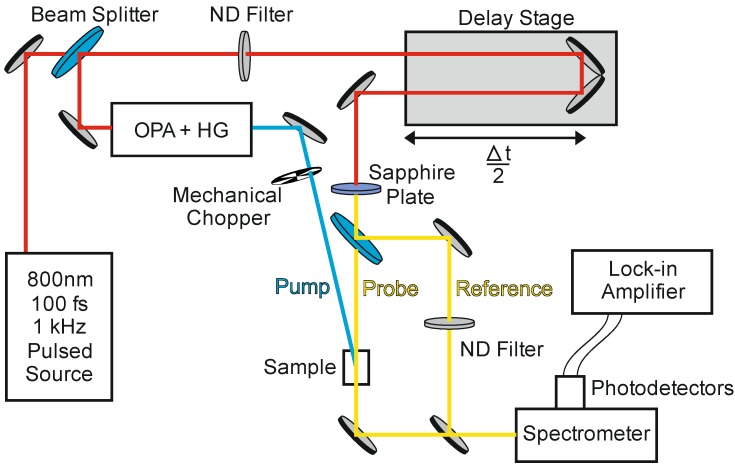Figure 2.
Schematic of a typical ultrafast transient absorption (UTA) experiment for measuring MEG. A Ti:Sapphire regenerative amplifier seeded by a Ti:Sapphire oscillator produces a pulsed beam at 800 nm, with 100 fs pulse width, ~1 mJ pulse energy and 1 kHz repetition rate (red line). Using a beam splitter 95% of this beam is passed to an optical parametric amplifier (OPA) with harmonic generating (HG) crystals to produce a pump beam that is tunable from the infra-red to the ultra-violet (blue line). The pump beam is passed through a mechanical chopper to improve the signal-to-noise ratio and then focused onto the sample. The remaining 5% of the beam from the amplifier is directed through a delay stage to vary the arrival time difference between pump and probe pulses at the sample. This beam is then passed through a sapphire plate to produce a white light continuum, which is split to form the probe and reference beams (yellow line). After the sample, the probe and reference beams are balanced using a neutral density (ND) filter (in the absence of the pump), passed through a spectrometer, then onto separate photodetectors. Small differences in probe and reference are detected using a lock-in amplifier synchronised to the chopper.

